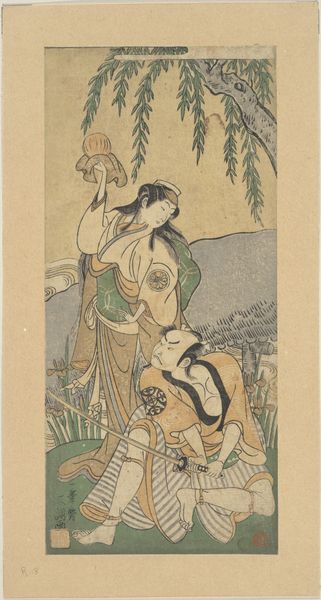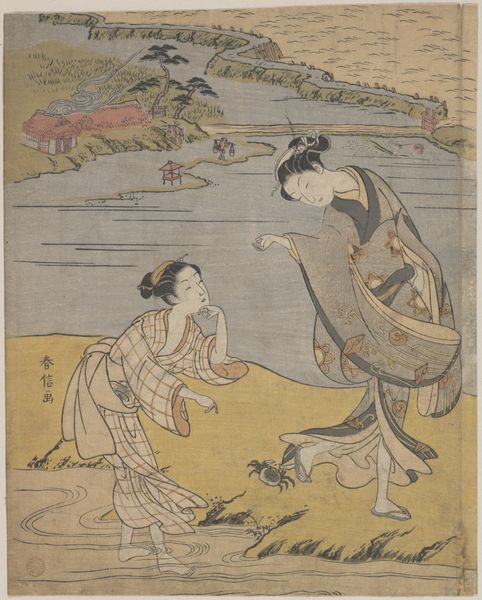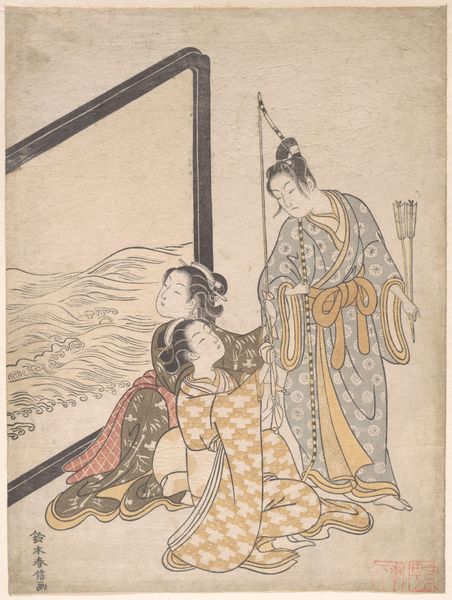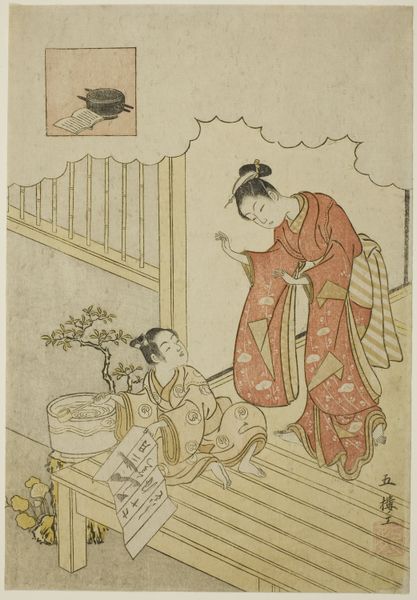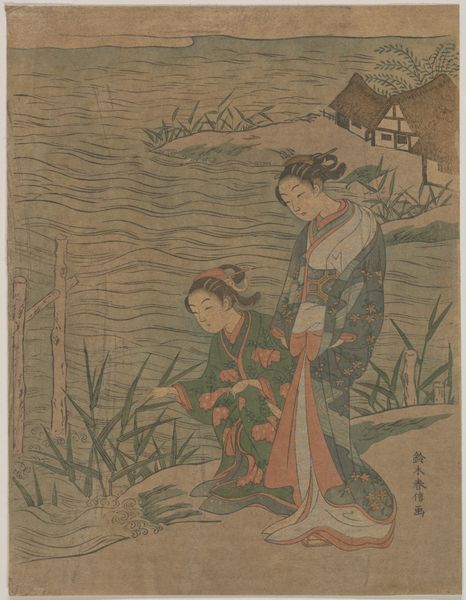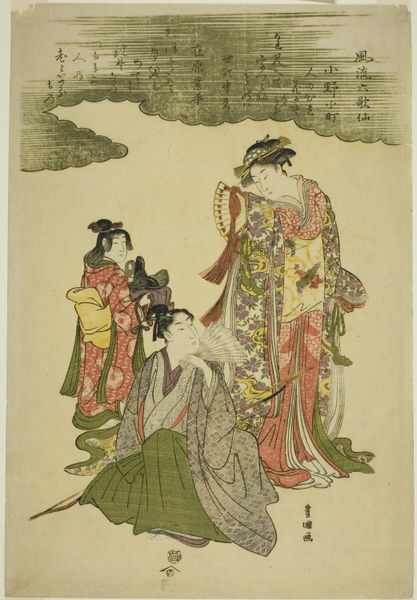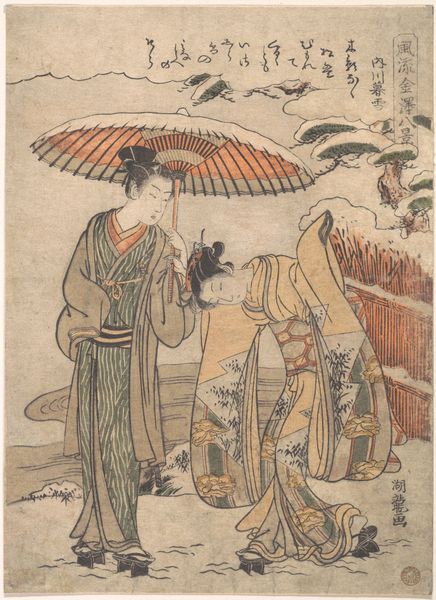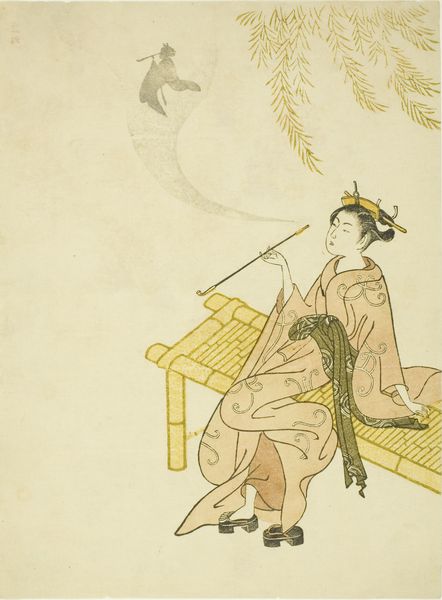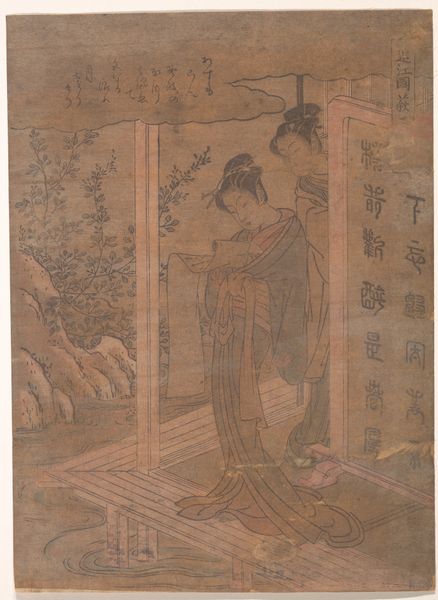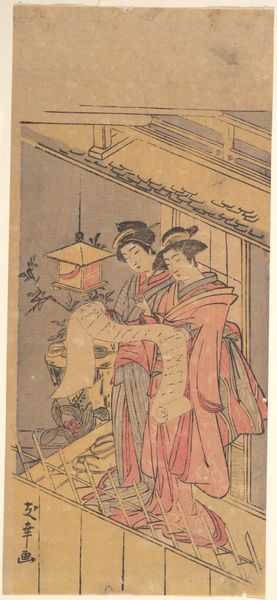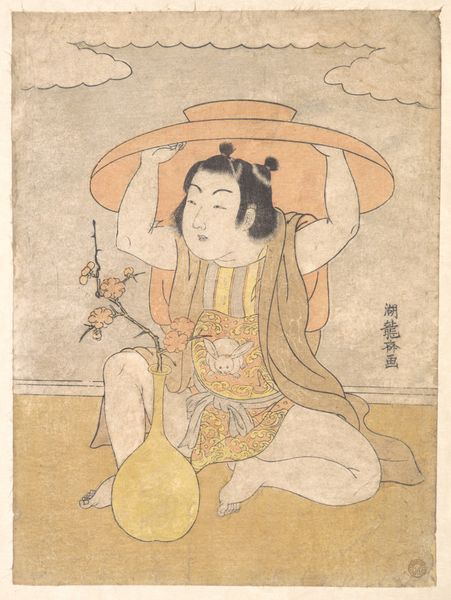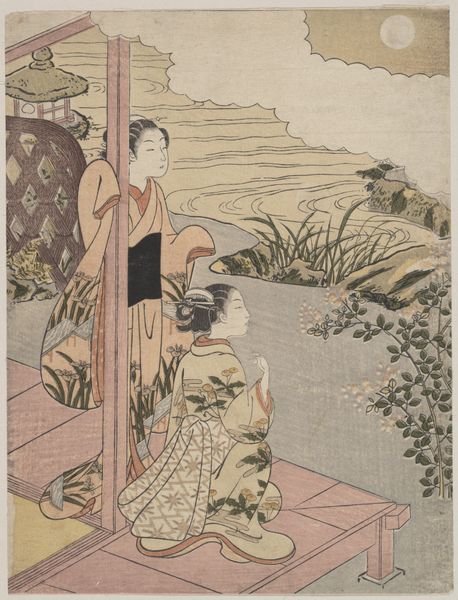
A Young Man and Women in the Moor of Musashino; Parody of the Akuta River episode of the Tale of Ise (Ise monogatari) 1765 - 1766
0:00
0:00
print, woodblock-print
# print
#
asian-art
#
landscape
#
ukiyo-e
#
figuration
#
woodblock-print
#
genre-painting
Dimensions: Image: 10 x 7 5/8 in. (25.4 x 19.4 cm)
Copyright: Public Domain
Editor: This woodblock print, dating back to 1765 or 1766, is by Suzuki Harunobu. It’s titled "A Young Man and Women in the Moor of Musashino; Parody of the Akuta River episode of the Tale of Ise (Ise monogatari)". It gives off a very dreamlike, almost theatrical quality to me, particularly in the staging of the figures against what seems to be an abstracted landscape. What do you see in this piece? Curator: Focusing on the intrinsic qualities of the work, observe how Harunobu employs a limited palette to unify the composition. The muted tones create a sense of harmony across the surface. Consider also how the linear elements, seen in the grass and the figures' robes, define spatial relationships within the flattened picture plane. What structural principles can we identify as most important in this arrangement? Editor: Well, the repetition of lines creates rhythm. The subtle shifts in colour also give depth, although the image remains fairly flat overall. How do these elements contribute to the artwork's meaning, outside of any symbolic meaning? Curator: Precisely. These visual decisions shape our engagement. The flattening of space emphasizes the surface of the print itself, drawing attention to the medium. Furthermore, the restrained palette focuses attention on the relationships between form and line. The overall composition conveys a sense of sophisticated elegance. The forms don’t seek to imitate anything, instead existing in dialogue only with one another and themselves. Do you appreciate how formal abstraction operates within representation? Editor: I think so. So, it’s about how the choices made in creating the art object contribute as much, or more, to the viewing experience than the scene itself? Curator: Precisely. Through analysis of form and composition, we start to unpick not simply what we see but *how* we see. The beauty lies within the visual relationships the artist creates. Editor: That gives me a lot to think about; I can see this print in a new light now. Curator: Indeed, observing closely its construction yields abundant returns, focusing our attention not just on *what* it depicts but on the intrinsic beauty of its design.
Comments
No comments
Be the first to comment and join the conversation on the ultimate creative platform.
